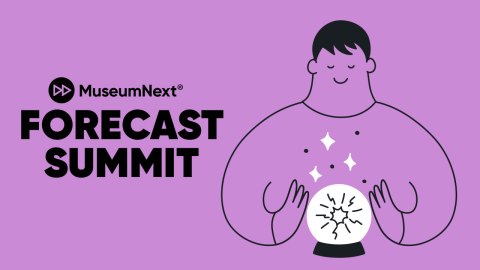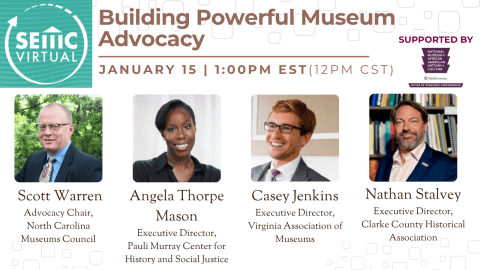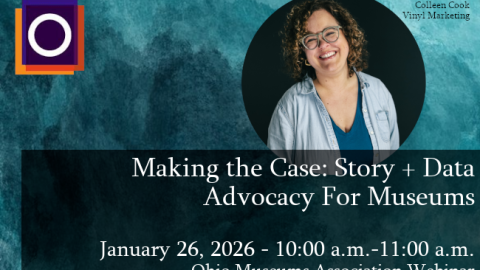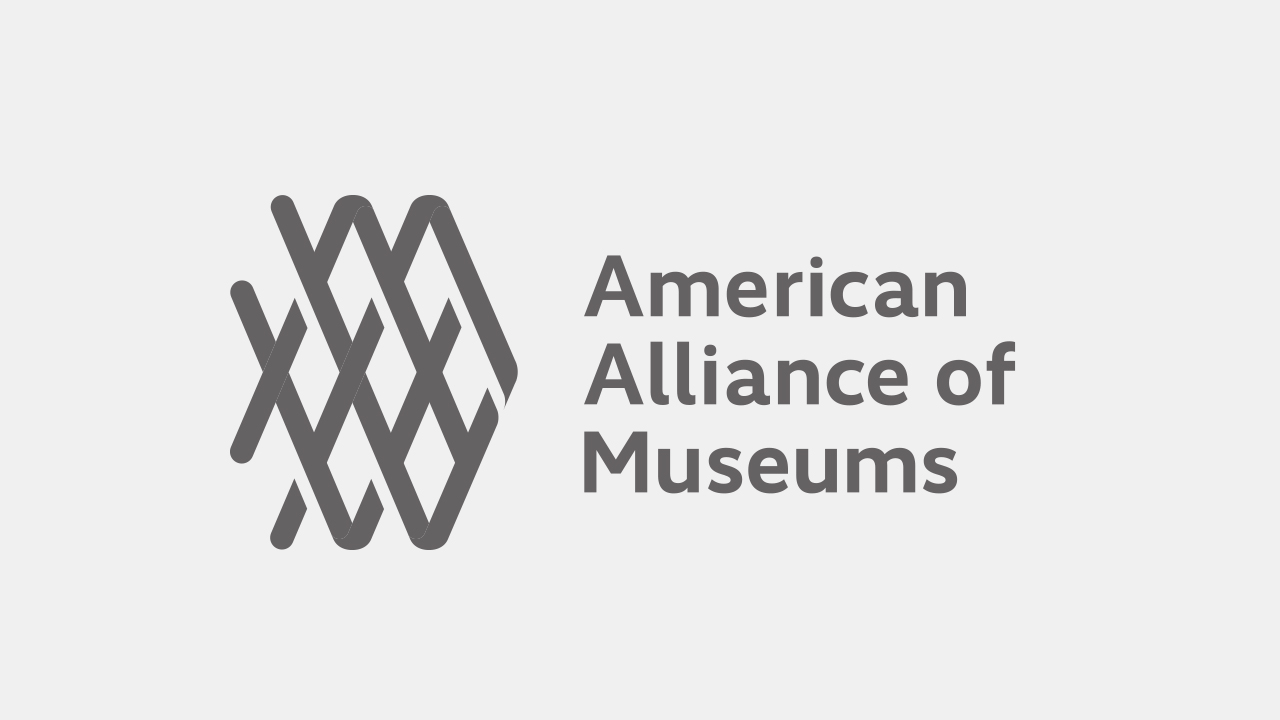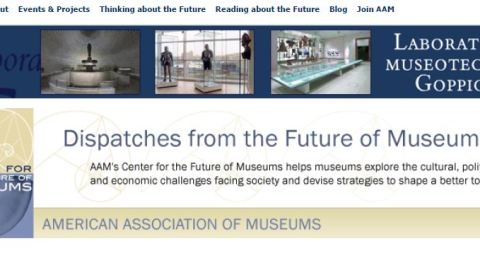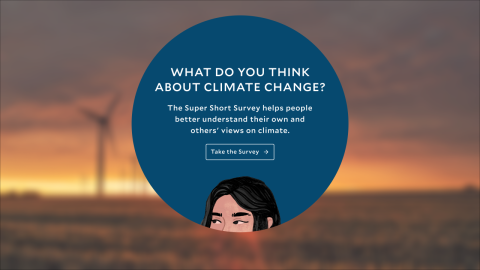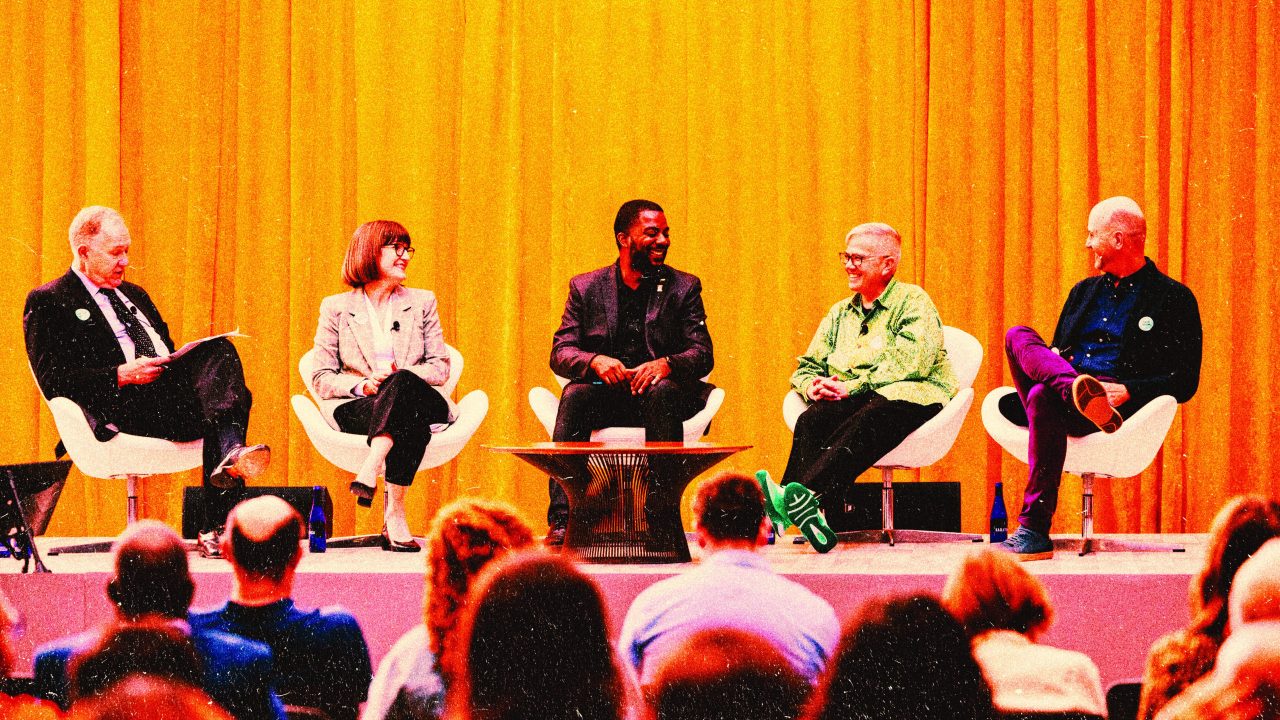
How three museums have successfully presented programs on difficult issues.
This article originally appeared in Museum magazine’s May/June 2025 issue, a benefit of AAM membership.
Historically, the public has viewed museums as trustworthy educational environments. Places of learning and discovery of history, art, and culture, museums encourage us to learn more about the world both near and far, often pushing us to see different perspectives. Our institutions must maintain this public trust to remain credible learning institutions that attract visitors and support.
But how do we maintain that trust when discussions across a broad range of topics feel increasingly contentious in today’s polarized environment? How can we design and offer programs that provoke meaningful and respectful engagement among audiences with different perspectives on an issue without alienating and offending them? How can we ensure that our programs reinforce—rather than weaken—public trust in our institutions or, worse yet, challenge our future viability?
Here we explore three museums that host programming on controversial topics on housing, race, and the international security community. These museums have faced both praise and critique, yet they have upheld their missions and strengthened public trust by fostering informed and inclusive dialogue.
A Focus on Programs
Programs are a common way for institutions to grapple with highly charged issues. They can be developed and produced more quickly than exhibitions and offer flexibility in responding to timely issues. However, with high-quality smartphone videos, live streaming, and social media commentary, a program’s reach extends beyond the immediate audience, often with more lasting impact.
The live nature of programs can also be particularly tricky to manage. No matter how much research and intentionality have gone into the program’s design, organizers and moderators may encounter unexpected comments and questions from presenters and audience members. When this occurs, staff must be prepared to step in to ensure discussions remain civil and productive.
Museums can certainly make clear that speakers’ opinions and comments are their own and do not necessarily reflect institutional views. But such a disclaimer doesn’t mean that the audience will understand this distinction. Instead, handling controversial discussions transparently, calmly, and diplomatically can go a long way in maintaining trust.
In addition, depending on how controversial the topic, museum leaders may need to keep certain stakeholders informed of their plans in advance. For example, at the International Spy Museum (SPY) in Washington, DC, the executive director is in close contact with the museum’s board and key community members, making them aware of potentially controversial programs and explaining why the museum is tackling them. The museum’s watchwords are: no surprises.
Some museums may want to avoid controversial or charged topics altogether, though it feels increasingly difficult to do so given the country’s deep and widening political, cultural, and ideological divides. Some museums have found themselves in controversy without initially realizing a topic’s sensitivity. The following case studies detail how three different museums have successfully broached complex and challenging issues through thoughtful program design.
Discussing Affordable Housing
At the National Building Museum (NBM) in Washington, DC, the exhibition “A Better Way Home” introduced innovative solutions to the US affordable housing crisis. The exhibition set the stage for the museum to mount its Housing Affordability Summit.
“Many people are directly affected by the lack of affordable housing, and it often feels like a daunting, unsolvable problem,” says Apasrin Suvanasai, Manager of Public Programs at NBM. “At the same time, many people don’t see the issue as relevant to them.” NBM wanted to spotlight its relevance.
The program organizers also felt it was critical to address the historical context of racist policies, such as redlining, which have long prevented people of color from becoming homeowners and building generational wealth. Facilitating the ability to live in a safe, affordable home is a critical aspect of the NBM mission. In planning the summit, the NBM education and programming team asked, “What do communities lose when housing becomes unaffordable?” That question became central to discussions at the summit.
“As a museum, we aren’t housing experts ourselves,” notes Suvanasai, which “is both helpful and challenging for presenting complex topics to the public.” The team received many recommendations for speakers from both internal and external stakeholders. Although “balancing the needs and expectations of sponsors while preserving the program’s integrity was sometimes difficult,” Suvanasai says, the team remained focused on creating a program that aligned with their objectives.
The museum embraced its role as a “convener,” bringing together experts from various fields to explore the issue. The opening speaker, April De Simone, shared a deeply personal account of her journey from homelessness to purchasing her first home in Trenton, New Jersey, as a Black woman. The closing speaker, Shaun Donovan, former US Secretary of Housing and Urban Development, provided a data-driven analysis of the affordable housing crisis, emphasizing that affordable housing is not just an individual concern but an economic issue that impacts communities nationwide.
The museum learned a lot from the event, including the importance of clearly defining a program’s target audience. “While we had a broad idea that the summit would appeal to industry professionals, academics, policy experts, students, and the general public … in the end, we attracted a mix of industry professionals and policy experts. We didn’t see the student or general public turnout we had anticipated,” Suvanasai says.
Post-event feedback from the summit has helped NBM tailor future programs on related subject matter to a broader public audience. The summit also inspired the “First Time Homebuyer Fair,” where attendees could meet with housing organizations and learn about topics like overcoming barriers to fair housing and building generational wealth through homeownership.
Presenting Unvarnished Truths
The National Museum of African American History and Culture (NMAAHC) in Washington, DC, is committed to presenting the unvarnished truth of African American struggles and triumphs. The museum’s programs are deeply rooted in its collections of artifacts, photographs, and documents that provide tangible evidence of key moments in history.
“We present these materials with factual accuracy, providing context without conjecture,” says Leslie P. Walker, Program Production Supervisor at NMAAHC. “By grounding our narratives in authentic artifacts, we ensure historical integrity while remaining sensitive to contemporary social and political climates. This approach allows visitors to draw connections between past and present, fostering a deeper understanding of ongoing issues.”
The NMAAHC program structure is intentionally designed to offer multiple perspectives. Panel discussions can include: a museum curator or representative discussing why an item is in the museum’s collection or the impetus for an exhibition; a noted expert offering deeper insights on the topic; an activist or practitioner discussing real-world implications; or a journalist or public intellectual moderating a discussion, breaking down complex ideas and prompting panelists to explain concepts in easy-to-digest ways. Panel topics have included inequities in health based on race; prison reform and restorative justice practices; education policies; health and nutrition; just policies for Black farmers; and the financial, health, and social impacts of COVID-19 on the African American community.
To ensure respectful discussions, NMAAHC employs a “press club style” approach to the Q&A portion of the program. Audience members submit written questions on index cards, which staff collect and vet before sharing them with the moderator. This prevents inappropriate questions, microphone monopolization, and off-topic inquiries, fostering meaningful engagement through a focused, respectful discussion.
Tackling Current Controversial Topics
The International Spy Museum (SPY) appeals to visitors intrigued by espionage, from kids who want to write in code to adults who want to imagine their life as an international person of mystery. SPY also holds serious public programming on national security and intelligence issues.
In February 2023, SPY hosted a panel focused on Havana Syndrome—a mysterious illness affecting US government personnel working overseas. Many of those affected believe they were targeted with an advanced weapon that left them with lasting medical maladies, such as dizziness, cognitive problems, insomnia, and headaches.
Critical museum stakeholders, including board members and colleagues from the intelligence community, had differing opinions about the proposed program topic. Some felt it was time to take on the subject, while others thought SPY would be wading into a messy mire.
Moderated by the museum’s historian, the panel included a journalist, a lawyer, and a former CIA officer with a long history of service in the intelligence community who has been outspoken about his Havana Syndrome symptoms. These were credible people with solid backgrounds, selected for their reputations and familiarity with the subject matter. The program marketing materials acknowledged that this was not a resolved issue—the CIA, FBI, and US State Department had different positions on the syndrome. The museum’s goal was not to provide definitive answers but diverse viewpoints to let the audience form their own conclusions.
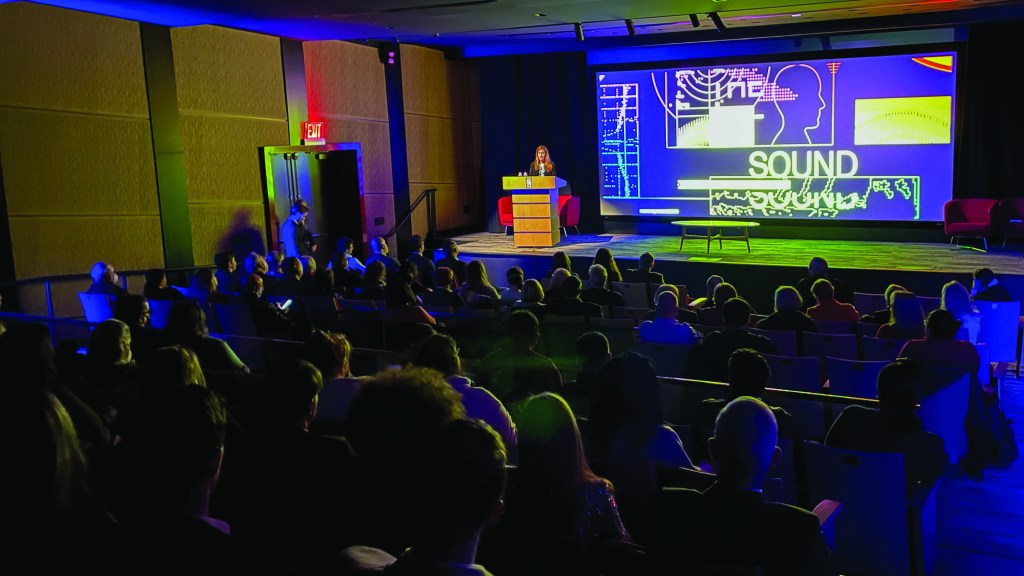
The program sold out, and its impact extended beyond the event. The panel discussion ultimately became part of an award-winning podcast, The Sound: The Mystery of Havana Syndrome, and the event recording currently has about 23,000 views on YouTube. Soon after the event, the CIA issued a report finding no connection between a foreign weapon and Havana Syndrome symptoms. In December 2024, the Senate Intelligence Committee released a report criticizing the CIA’s treatment of Havana Syndrome patients. The story continues to evolve.
For museums new to engaging with their communities on complex and charged topics, developing programs like these may seem daunting. But by proactively anticipating potential challenges, designing thoughtful discussions, and maintaining transparency, museums can create conversations that are both civil and thought-provoking, ultimately reinforcing their role as trusted institutions.
Before You Begin
Following are some questions institutions should consider before offering programs on challenging topics.
Relevance: How does the topic align with the museum’s mission and collections?
Position: What is your position on the topic, or is it important to stay neutral? How will you communicate this?
Boundaries: Are there subtopics or question areas that you want to avoid? How will you maintain these boundaries respectfully without jeopardizing trust? Will you have an open-mic format for questions, allow only pre-determined questions, or avoid Q&A entirely? How do you make those decisions?
Stakeholders: Have you considered how all stakeholder groups, including staff, funders, and board members, may be affected by the topic? Have their perspectives been taken into account?
Data: Is there data you can use to make the case for offering the program if there is resistance?
Credibility: Are the speakers credible and consistent in the information they have shared on the topic? What steps should you take to vet potential speakers?
Diverse Perspectives: Does the program include multiple viewpoints to provide a balanced discussion?
Capacity: Do you have trained staff who can facilitate difficult conversations or diffuse contentious situations respectfully and productively? Should you consider an outside facilitator?
